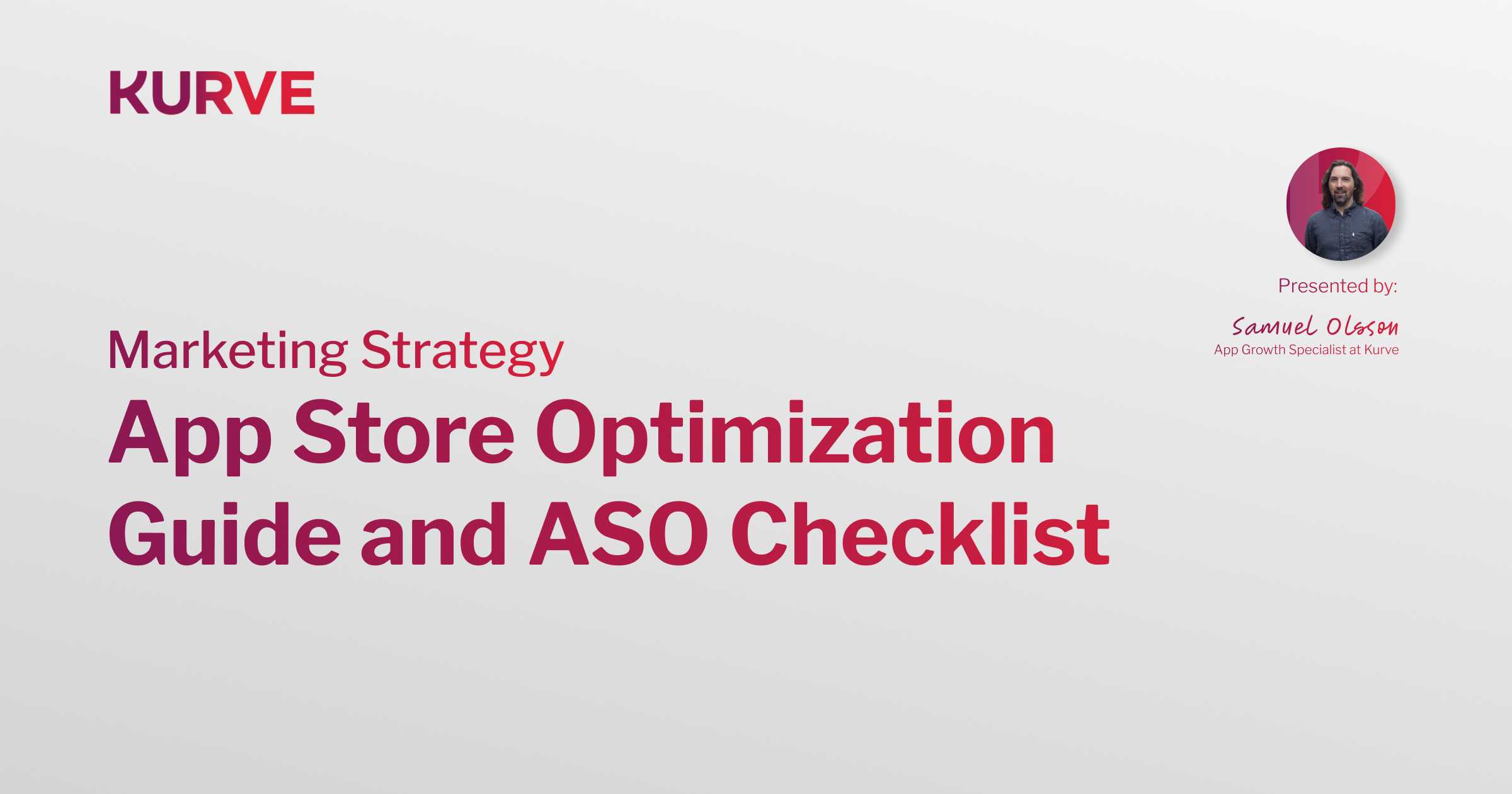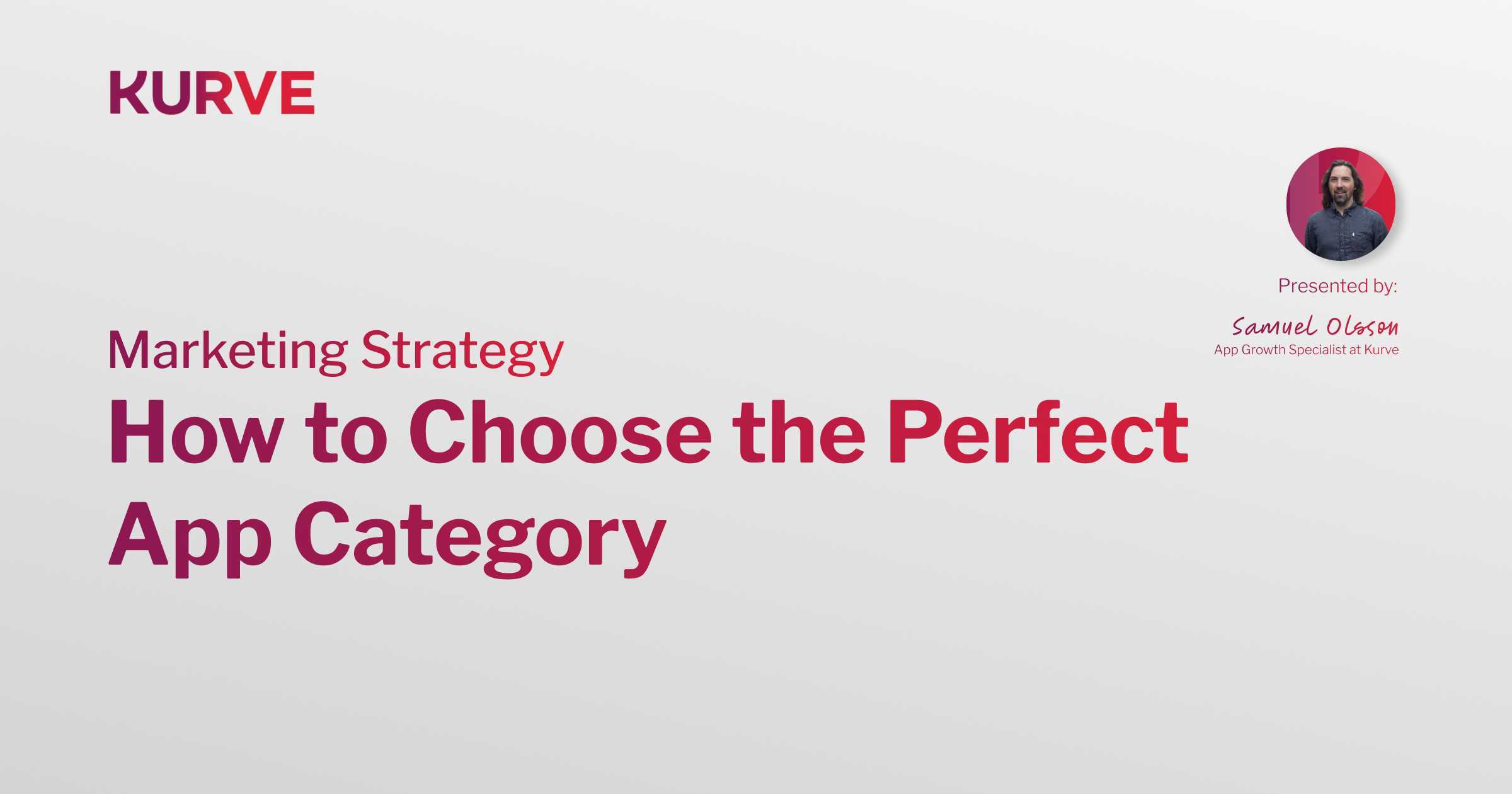Mobile App User Acquisition: Effective Strategies & Metrics
With about 3 million apps in the market, it's a battle for user attention.
Your app may deserve a place at the top - but without a user acquisition plan, it will get lost in the digital noise. Yet, building a successful mobile app acquisition strategy can be challenging. There are countless channels to explore, budgets to consider, and ever-evolving user behaviors to keep track of.
But don’t worry. At Kurve, we're experts in this field. In this guide, we've compiled everything you need to know to develop your acquisition plan.
| Table Of Contents |
What is Mobile App User Acquisition?
App user acquisition (UA) is the process of attracting new users to your app and converting that interest into downloads and active engagement.
Unlike marketing a physical product, mobile apps face a unique challenge. Discovery takes place within app stores, which are overflowing with competitors. User acquisition must go beyond brand awareness and focus on driving users directly to the app download point.
The mobile app industry thrives on a high volume of users. An effective UA strategy helps you;

- Reach a critical mass of users,
- Foster a vibrant app community,
- Boost organic discoverability through positive reviews and app store rankings.
Benefits of an Effective Mobile App User Acquisition Strategy
Here's how a strong mobile user acquisition strategy can propel your app to new heights:
Increased App Visibility

A strong UA strategy involves a multi-pronged approach. It leverages various channels to boost your app store ranking and online presence. Techniques like App Store Optimization (ASO) ensure your app title, description, and keywords resonate with user search queries within the app store.
Strategic social media marketing campaigns, influencer partnerships, and targeted online advertising can increase your app's visibility across relevant online platforms. By employing these tactics, you can ensure your app cuts through the noise and gets discovered by users actively seeking the solutions your app provides.
Higher User Engagement

Beyond downloads, user acquisition is about attracting users who resonate with your app's value proposition. A shotgun approach that casts a wide net might lead to a download surge. But, it won't translate to long-term user engagement. A targeted UA strategy focuses on attracting genuinely interested users to the problems your app solves.
Leveraging user behavior data and analytics tools allows you to understand user demographics. With this insight, you can tailor your UA campaigns to attract individuals who will most likely find your app engaging.
Improved User Retention

A well-defined UA strategy considers the entire user lifecycle. This ensures you attract genuinely interested users in what your app offers. You can achieve this by implementing a seamless onboarding process that educates users on your app's functionalities and showcases its value.
Focusing on user experience (UX) ensures your app is intuitive, user-friendly, and delivers on its promises. Prioritizing user retention strategies alongside acquisition efforts cultivates loyal app users who keep returning for more. It also fosters a thriving app community, boosting organic growth through positive reviews and app store rankings.
Better Competitive Edge

A strategic UA strategy gives you the edge you need to stand out from the crowd. By understanding your target users and their needs, you can tailor your UA approach to resonate with their pain points. This can involve crafting targeted messaging highlighting your app's unique features and competitive advantages.
Leveraging user reviews and testimonials can also build trust and social proof. Social proof is a crucial influence on potential users who might be considering similar apps. By focusing on a targeted and data-driven UA strategy, you can carve out a niche in the market and attract high-value users who wouldn't have found your app otherwise.
Cost Efficiency

A successful UA strategy leverages both paid and organic channels. This allows you to optimize your budget and maximize your ROI. Organic channels like ASO and content marketing generate user acquisition without a heavy financial outlay. By focusing on these organic channels, you can establish a strong foundation for user acquisition.
Paid advertising platforms offer granular targeting options. They allow you to reach users likely to convert into paying customers or active users. By employing a data-driven approach that tracks the performance of both paid and organic UA efforts, you can allocate resources efficiently and ensure you're getting the most out of your marketing budget.
Mobile App User Acquisition Strategies: Growing Your App Audience

Here are some powerful user acquisition (UA) strategies to jumpstart your app's growth:
1. App Store Optimization (ASO)
Think of your app store listing as your shop window on a busy digital street. ASO optimizes your listing so that it's found by potential customers searching for solutions. This means including relevant keywords throughout your title, description, and metadata.
Craft a clear, engaging app description highlighting the key features and benefits that solve user problems. Showcase your app's functionality with high-quality screenshots and a compelling video preview. Keep your app updated with new features and bug fixes to maintain a high ranking and attract positive reviews.
Also, remember the difference between the ASO approaches for the Google Play Store and Apple App Store. Google Play allows more detailed descriptions, while the Apple Store prioritizes shorter, more engaging keywords.
2. Content Marketing
Becoming a thought leader in your niche attracts users organically through valuable content.
It starts with developing a content marketing strategy that caters to your target audience's interests and needs. This could include;
- Blog posts addressing common pain points your app solves,
- Infographics that visually represent key statistics,
- Engaging videos showcasing your app's features.
Providing valuable content builds brand awareness and drives organic traffic to your app's landing page. Over a consistent period, this converts interest into downloads.
3. Social Media Advertising
Leverage social media platforms' power to target your ideal users with laser precision.
Platforms like Facebook, Instagram, Twitter, and TikTok offer sophisticated targeting options based on demographics, interests, and online behaviors. For example, we found opportunities to reach Sweatcoin’s target demographic through micro-influencers. This strategy reduced their CPI and put the fitness app in the global top spot.
Create eye-catching ad creatives that resonate with your target audience. Use various ad formats like video ads, carousel ads with multiple screenshots, or eye-catching stories to grab their attention and spark interest in downloading your app.
4. Influencer Partnerships
Partner with social media influencers with a strong and engaged following within your app's niche.
It's important to note that they don’t have to have many followers. Marketers have seen the potential of reaching niche audiences through micro-influencers. These influencers can act as trusted voices, promoting your app to their audience through positive reviews, engaging tutorials, or enthusiastic endorsements.
The key is to choose influencers whose followers resemble your target market. Moreover, influencers must have free rein in their creative process for their videos. We discovered the positive impact of this with Bounty’s campaign. Authenticity ensures your message reaches the right people and maximizes the impact of your influencer marketing campaigns.
5. Referral Programs
Turn your happy users into brand ambassadors with a rewarding referral program. Incentivize existing users to spread the word by offering them in-app credits, discounts, or exclusive features for every friend they refer who downloads the app.
This strategy leverages the power of word-of-mouth marketing – a trusted source of information for many users. A well-structured referral program can increase your user base by capitalizing on the positive experiences of your existing users and fostering a sense of community within your app.
6. Paid User Acquisition Campaigns
Don't be afraid to leverage the power of paid advertising to reach a wider audience. Platforms like Google Ads, Apple Search Ads, and mobile ad networks offer highly targeted advertising solutions.
Use performance-based models like CPI, ensuring you only pay when someone successfully downloads your app. This minimizes financial risk while maximizing the ROI. Remember, paid advertising is a long process, and results take time. Monitor and optimize your campaigns based on performance data. Analyze what resonates with your target audience and adjust creatives, targeting parameters, and budgets as needed.
7. App Review and PR Campaigns
Positive word-of-mouth is gold in the app industry. Secure glowing reviews and media coverage to establish your app's credibility and attract new users. Reach out to app review sites, tech blogs, and industry publications relevant to your niche.
Highlight your app's unique features and value proposition, and showcase how it solves user pain points — craft strategic PR campaigns to generate buzz and increase visibility. Make sure to announce your major updates, exciting new features, or significant milestones to grab the attention of potential users and media outlets.
8. Email Marketing
Build a loyal following and nurture relationships with potential and existing users through email marketing. Create a targeted email list by offering valuable resources or exclusive content in exchange for user sign-ups. Develop a regular communication cadence, sending newsletters, updates about your app's development, and special promotional offers.
Personalize your emails whenever possible, addressing users by name and tailoring content to their interests and app usage patterns. This keeps your app top-of-mind, encourages engagement, and ultimately drives app downloads.
9. Partnerships and Collaborations
Forming partnerships with brands with a similar target audience can unlock new user acquisition opportunities and amplify your reach. For example, think of a fitness app partnering with a health supplement brand. The fitness app might offer exclusive discounts on protein powder to its users who download the health supplement brand's app and vice versa.
This mutually beneficial approach allows both parties to tap into a wider demographic and leverage each other's existing user base. Partnerships can also involve;
- Co-hosting webinars or contests,
- Creating informative blog content together,
- Integrating functionalities across each other's apps to provide a more seamless user experience.
10. App Launch Events and Webinars
If you're in the app launch phase, generate excitement and anticipation by hosting interactive events and webinars. Use these platforms to showcase your app's functionalities in a live setting. Conduct live demonstrations, answer user questions in real-time, and engage with potential users.
Offer exclusive incentives to attendees, such as early access to your app or special discounts. This personalized approach encourages initial downloads and fosters a sense of community and loyalty from the beginning, paving the way for a thriving user base.
Metrics to Measure Your Acquisition Strategies
You've implemented a robust UA strategy to get your app into the hands of potential users. But how do you know if your efforts are paying off? Here’s what you need to track;
- Cost per Install (CPI): How much you pay per app download from a specific channel (e.g., ad, influencer).
- Customer Acquisition Cost (CAC): The total cost of acquiring a new user, including marketing, app store fees, and development resources.
- Lifetime Value (LTV): The total revenue a user generates while using your app.
- Conversion Rate: The percentage of users who take a desired action, like downloading your app after seeing an ad.
- Retention Rate: The percentage of users who keep using your app after a certain period (high = good).
- Churn Rate: The opposite of retention rate - the percentage of users who stop using your app (low = good).
- Daily/Monthly Active Users (DAU/MAU): How many users actively use your app daily or monthly.
- Install Attribution: This shows which marketing channel led a user to download your app.
- User Acquisition Funnel Metrics: Tracks user behavior throughout the acquisition process to identify where they might drop off.
- Engagement Metrics: Dives deeper into how users interact with your app (time spent, features used, purchases made).
Understanding the CAC and their potential LTV is crucial for making informed financial decisions. If your CAC exceeds your LTV, you lose money on every new user acquired.
Monitor these metrics to identify areas for improvement and optimize your UA strategies to maximize ROI. You can use analytics tools to gather, analyze, and visualize your app's performance data. They can translate raw data into actionable insights. This data lets you pinpoint which channels deliver the most valuable users.
Empower Your App Acquisition Strategy with Kurve
An effective user acquisition strategy is always an ongoing process.
Experiment with different tactics, analyze results and adapt your approach to optimize user acquisition and fuel sustainable app growth.
Let us know how Kurve can help you with your app’s user acquisition strategy and more.
Check out our blog for further insights on app development, marketing, and user engagement strategies.


